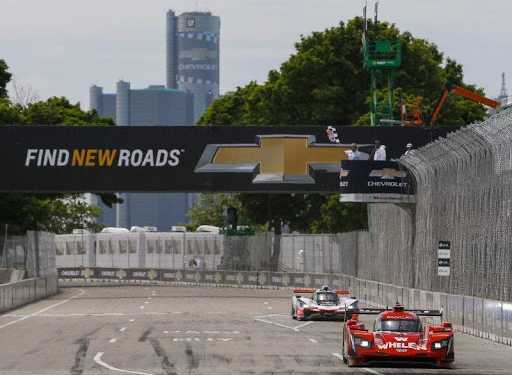The NTT IndyCar Series offers up every test of a race car driver?s physical and mental capacities. There are ovals such as the Indianapolis Motor Speedway, where it?s a pedal to the metal, all-out sprint for 500 miles. Ripping around the track at speeds in excess of 200 miles per hour is challenging to the driver?s mental fatigue. One blip that causes a loss of focus and winning the race will become the least of their problems.? ? ?
There are bumpy street courses that tax a driver?s physical well-being and rugged road circuits where every tool in a driver?s repertoire will be required at some point during the race. ? ? ? ? ?
This variety in circuits brings to mind an old horse-racing bettor?s saying about there being horses for courses. If you?re someone who might wager a dollar or two on an IndyCar race at CanadaSportsBetting.ca, or other online betting sites, the variety of racing venues demand as much attention be paid to where they are racing that week as well as who is behind the wheel.? ?
Perhaps nowhere does the punishment max out for these elite athletes more so than the annual Detroit Grand Prix. Touring the bumpy, unforgiving 2.3-mile, 13-turn temporary street course on Belle Isle once a year would exact enough of a physical toll on these world-class drivers. The Detroit GP, though, is the most unique stop of the NTT IndyCar Series. That?s because they contest two races – one on Saturday afternoon and a second on Sunday afternoon.?
“Detroit Grand Prix” by IMSA is licensed under CC BY 3.0
The Dual In Detroit
Team Penske driver Simon Pagenaud, the 2016 IndyCar champion and the 2019 Indianapolis 500 winner, insists that racing in the Detroit GP on the Belle Isle circuit is like dancing with his race car. Pagenaud won the second leg of what?s known as the Dual In Detroit in 2013. That was the first year that the Detroit GP consisted of a twinbill of races.
?Here you need to be on your toes the whole time,? Pagenaud told the Windsor Star. ?You’re balancing the race car corner after corner. Some corners are very tight, so you need to carry a lot of brake into the corner in order to carry around the corner.
?It gets pretty bumpy and the steering wheel tries to get out of your hands. It’s very physical. It’s very easy to hit the wall if you just miss it by an inch. And at this speed, an inch happens very quickly.?
The Detroit Grand Prix is the lone doubleheader on the IndyCar circuit.?

“Detroit Grand Prix” by detriotgp is licensed under CC BY 3.0
Right After Indy
The IndyCar drivers go from the full speed ahead approach on the slick, smooth oval of the Indianapolis 500 to the bumpiest course on the circuit. Two 70-lap races on Belle Isle make the body feel like it just went through a pair of sparring sessions with Mike Tyson in his prime.
?We go from the most mentally demanding track in Indy to one of the most physically gruelling weekends – a doubleheader on a bumpy street course,? Andretti Herta Autosport driver Marco Andretti said. ?One of them is super mental. It actually takes from your physical because of how on it you have to be for 500 miles.
?And then Detroit is just physically gruelling and you have to wake up and do it all again on Sunday. (www.easyvet.com) But I welcome it. I think it really brings out the fitness in drivers and how you’re able to recover.
?It’s a really tough turnaround, especially for the crew. But for us, you can wake us up any day of the week and we’ll drive wherever we are. It’s definitely a shift in mindset but it’s the same for everyone.?
Detroit requires a 90-degree turn in terms of driving style.
?At Indy, you move the wheel about that much,? Team Penske driver Will Power said, his hand motions barely noticeable. ?It’s very small increments at a really high speed and the risk is high.
?Whereas here, you’re just brutalizing the car. You’re manhandling it in a lot of ways.
?You really get thrown around. Physically, it takes a lot out of you.?
It isn?t just the drivers who have to be on their toes throughout the stress-filled weekend that is the Detroit GP.
?Doubleheaders are extremely stressful, not just for the drivers but for the guys (in the crew),? Chip Ganassi Racing driver Tony Kanaan explained.
?It takes a big toll on the guys. The possibilities of making a mistake, it’s real easy.?


